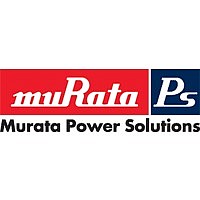LLL153C80J224ME14E Murata Electronics North America, LLL153C80J224ME14E Datasheet - Page 150

LLL153C80J224ME14E
Manufacturer Part Number
LLL153C80J224ME14E
Description
CAP CER
Manufacturer
Murata Electronics North America
Series
LLLr
Datasheet
1.GNM1M2R71C104MA03D.pdf
(220 pages)
Specifications of LLL153C80J224ME14E
Capacitance
0.22µF
Voltage - Rated
6.3V
Tolerance
±20%
Temperature Coefficient
X6S
Mounting Type
Surface Mount, MLCC
Operating Temperature
-55°C ~ 105°C
Applications
Bypass, Decoupling
Ratings
-
Package / Case
-
Size / Dimension
-
Height
-
Thickness
-
Lead Spacing
-
Features
Low ESL (Reverse Geometry)
Lead Style
-
Lead Free Status / Rohs Status
Lead free / RoHS Compliant
Other names
LLL153C80J224ME14L
LLL153C80J224ME14L
LLL153C80J224ME14L
Available stocks
Company
Part Number
Manufacturer
Quantity
Price
Company:
Part Number:
LLL153C80J224ME14E
Manufacturer:
MURATA
Quantity:
640 000
- Current page: 150 of 220
- Download datasheet (4Mb)
8
!Note
• This PDF catalog is downloaded from the website of Murata Manufacturing co., ltd. Therefore, it’s specifications are subject to change or our products in it may be discontinued without advance notice. Please check with our
• This PDF catalog has only typical specifications because there is no space for detailed specifications. Therefore, please approve our product specifications or transact the approval sheet for product specifications before ordering.
sales representatives or product engineers before ordering.
!Note
4-3. Correction with a Soldering Iron
1. When sudden heat is applied to the components when
2. After soldering, do not allow the component/PCB to
3. The operating time for the re-working should be as short
4. Optimum Solder amount when re-working with a
4-4. Leaded Component Insertion
1. If the PCB is flexed when leaded components (such as
5. Washing
Excessive ultrasonic oscillation during cleaning can cause
the PCBs to resonate, resulting in cracked chips or broken
solder joints. Take note not to vibrate PCBs.
148
!Caution
!Caution
using a soldering iron, the mechanical strength of the
components will decrease because the extreme
temperature change can cause deformations inside the
components. In order to prevent mechanical damage to
the components, preheating is required for both the
components and the PCB board. Preheating conditions,
(The "Temperature of the Soldering Iron Tip", "Preheating
Temperature", "Temperature Differential" between the
iron tip and the components and the PCB), should be
within the conditions of table 3. It is required to keep the
temperature differential between the soldering iron and
the component surfaces ( T) as small as possible.
rapidly cool down.
as possible. When re-working time is too long, it may
cause solder leaching, and that will cause a reduction in
the adhesive strength of the terminations.
Soldering lron
4-1. In case of sizes smaller than 0603, (GRM03/15/18,
4-2. A soldering iron with a tip of ø3mm or smaller should
4-3. Solder wire with ø0.5mm or smaller is required for
transformers and ICs) are being mounted, chips may
crack and solder joints may break.
Before mounting leaded components, support the PCB
using backup pins or special jigs to prevent warping.
Continued from the preceding page.
• Please read rating and !CAUTION (for storage, operating, rating, soldering, mounting and handling) in this catalog to prevent smoking and/or burning, etc.
• This catalog has only typical specifications because there is no space for detailed specifications. Therefore, please approve our product specifications or transact the approval sheet for product specifications before ordering.
GJM03/15, GQM18, ERB18), the top of the solder
fillet should be lower than 2/3's of the thickness of the
component or 0.5mm whichever is smaller. In case of
0805 and larger sizes, (GRM21/31/32/43/55, GQM21,
ERB21/32), the top of the solder fillet should be lower
than 2/3's of the thickness of the component. If the
solder amount is excessive, the risk of cracking is
higher during board bending or under any other
stressful condition.
be used. It is also necessary to keep the soldering
iron from touching the components during the
re-work.
soldering.
Table 3
GRM03/15/18/21/31
GJM03/15
GQM18/21
ERB18/21
GRM32/43/55
ERB32
*Applicable for both Pb-Sn and Lead Free Solder.
Pb-Sn Solder: Sn-37Pb
Lead Free Solder: Sn-3.0Ag-0.5Cu
Part Number
350 C max.
280 C max.
Temperature
of Soldering
Iron Tip
Temperature
150 C min.
150 C min.
Preheating
Continued on the following page.
Temperature
Differential
TV190 C
TV130 C
Solder Amount
( T)
in section
Atmosphere
Air
Air
C02E.pdf
09.9.18
Related parts for LLL153C80J224ME14E
Image
Part Number
Description
Manufacturer
Datasheet
Request
R

Part Number:
Description:
BUZZER PIEZO 25VP-P SMD
Manufacturer:
Murata Electronics North America

Part Number:
Description:
CAP 4-ARRAY 680PF 100V X7R 1206
Manufacturer:
Murata Electronics North America
Datasheet:

Part Number:
Description:
CAP 4-ARRAY 1000PF 100V X7R 1206
Manufacturer:
Murata Electronics North America
Datasheet:

Part Number:
Description:
CAP 4-ARRAY 1800PF 100V X7R 1206
Manufacturer:
Murata Electronics North America
Datasheet:

Part Number:
Description:
CAP 4-ARRAY 68000PF 16V X7R 1206
Manufacturer:
Murata Electronics North America
Datasheet:

Part Number:
Description:
CAP CER 1000PF 50V 10% X7R 0402
Manufacturer:
Murata Electronics North America
Datasheet:

Part Number:
Description:
CAP CER 10000PF 16V 10% X7R 0402
Manufacturer:
Murata Electronics North America
Datasheet:

Part Number:
Description:
CAP 5.5-25PF 2.5X3.2MM SMD
Manufacturer:
Murata Electronics North America
Datasheet:

Part Number:
Description:
CAP 4.5-20PF 2.5X3.2MM SMD
Manufacturer:
Murata Electronics North America
Datasheet:

Part Number:
Description:
CAP 5.0-20PF 3.2X4.5MM SMD RED
Manufacturer:
Murata Electronics North America
Datasheet:

Part Number:
Description:
CAP 2.0-6.0PF 3.2X4.5MM SMD BLU
Manufacturer:
Murata Electronics North America
Datasheet:

Part Number:
Description:
CAP 1.4-3.0PF 3.2X4.5MM SMD BRN
Manufacturer:
Murata Electronics North America
Datasheet:

Part Number:
Description:
CAP 3.0-10PF 3.2X4.5MM SMD WHT
Manufacturer:
Murata Electronics North America
Datasheet:

Part Number:
Description:
CAP 2.0-6.0PF 4X4.5MM TOPADJ BLU
Manufacturer:
Murata Electronics North America
Datasheet:

Part Number:
Description:
CAP 8.5-40PF 4X4.5MM TOPADJ YEL
Manufacturer:
Murata Electronics North America
Datasheet:











